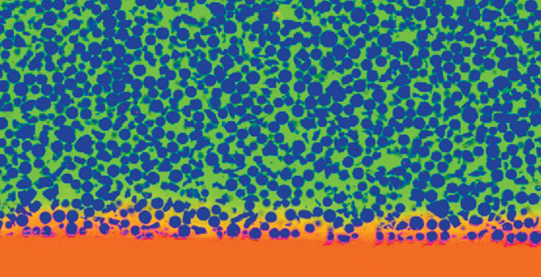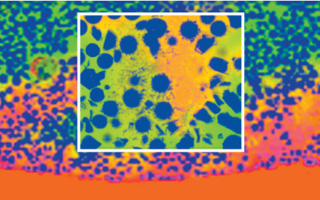ALLAN MORTON (allanm@laserbond.com.au) is the chairman of LaserBond, Smeaton Grange, NSW, Australia; www.laserbond.com.au.
The cutting edge of laser cladding technology
Are you an expet in Laser Industry? are you an expert in Apps Industry?
LaserTrade is an appendix of Sylodium, when we are browsing in Sylodium
Sylodium is the general matrix,
LaserTrade is the platform of Laser Business from Asia and EU to Africa
This new from Laser Focus World
Deposition process redesigns high-wear components
ALLAN MORTON
Since its establishment in 1993 (initially as HVOF Australia Pty Ltd), LaserBond has concentrated on research, development, and implementation of advanced surface-engineering techniques to dramatically reduce the wear rates, maintenance, and operating costs of production-vital components. It manufactures, repairs, reclaims, and enhances the performance of high-wear-critical metal components in a range of capital-intensive industries—particularly mining, where equipment constantly operates in a variety of highly abrasive and uncommon wear conditions.
With a staff of 60, the company serves a variety of industries in addition to mining, including metal refining and smelting; power generation; road and rail transport; aerospace and gas turbines; shipping; valves and fluid handling; and oilfield drilling and exploration.
Laser deposition development
A precursor to LaserBond's recent growth was its development of a patented laser deposition process. This research work, led by founder and executive director Greg Hooper, was directed towards enabling high deposition rates of typically hard-phase metallurgy, with minimal debilitating impact on the substrate and overlay.
"Our method enables the laser deposition of metallic or metal matrix composite (MMC) layers with a full metallurgical bond by utilizing an accurately focused, infinitely controllable, high-power laser beam supported in a multi-axis robot and integrated with a separate multi-axis workpiece platform that enables precise control of heat transfer into base material and the deposited layer," Hooper explains. "Our integration enables the repair of temperature-sensitive components and materials, such as hardened shafts and gears, with minimal risk of distortion or other undesirable heat effects that undermine the integrity of the component or in-service performance. This method enables the deposition of MMC overlays with significantly smaller hard-phase particles, with minimal heat effects. The concentration of hard phases can be significantly increased and dramatically improved distribution achieved with the new method. Therefore, the mean free path between the WC (tungsten carbide) particles is smaller and wear resistance is considerably improved."
....
....

...
...
What the future holds
In 2016, LaserBond experienced commercial success, including 240% growth in exportsales from its development of new products and customers, both domestic and international. Morton says the company was on track for a forecasted 30% growth in 2017 and, in coming years with investment in its next-generation advanced laser cladding technology cell, will open more doors to OEM customers with greater cladding performance demands on larger products.
"There's no absolute on the future—you just position yourself as best you can until you get there," Morton says. "Our strategic international relationships are growing on the supplier side and customer side. We are delivering for companies who are seeking high-performance wear resistance in particularly tough situations. LaserBond excels when working in strategic partnerships. As an example, we designed a machine tailored for an international company that makes a 10-ton crusher roller, which allows them to refurbish it."


